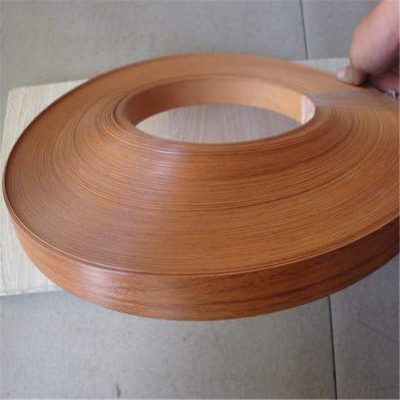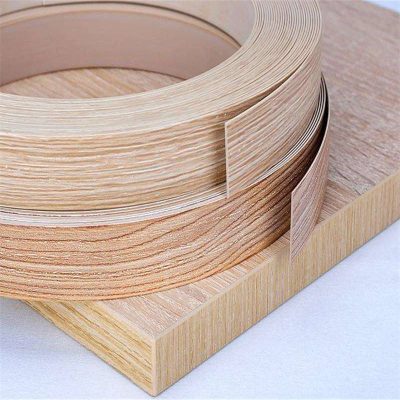PVC (Polyvinyl Chloride) edge banding is a widely used material for finishing and protecting the exposed edges of furniture, cabinets, and other wooden or engineered wood products. Like any material, it comes with its own set of advantages and disadvantages:

Advantages of PVC Edge Banding:
- Cost-Effective: PVC edge banding is generally more affordable compared to other edge banding materials like solid wood or metal, making it a cost-effective choice for budget-conscious projects.
- Wide Variety: It is available in a wide range of colors, patterns, and finishes, allowing you to match or complement the appearance of the substrate material or achieve various design aesthetics.
- Durability: PVC edge banding is highly durable and resistant to wear, impact, moisture, and most household chemicals. This makes it suitable for both residential and commercial applications.
- Easy to Clean: The smooth surface of PVC edge banding is easy to clean and maintain, making it suitable for use in kitchens, bathrooms, and other areas prone to spills and stains.
- Flexibility: PVC edge banding is flexible and can be easily applied to curved or contoured edges, providing versatility in design and application.
- Consistency: It offers consistent color and pattern throughout the length of the roll, ensuring a uniform appearance when applied to multiple edges.
- Ease of Installation: PVC edge banding can be applied using hot melt adhesive, making it relatively straightforward for both professionals and DIY enthusiasts to work with.
Disadvantages of PVC Edge Banding:

- Environmental Concerns: PVC is a thermoplastic material derived from petroleum, and its production and disposal can have environmental impacts. Recycling PVC can be challenging.
- Vulnerability to Heat: PVC can soften or deform when exposed to high temperatures, which can be a concern in applications near heat sources or appliances.
- Not Suitable for High-Temperature Applications: It may not be the best choice for applications that require resistance to extremely high temperatures, such as countertops near stovetops.
- Limited Repair Options: Once PVC edge banding is damaged or comes loose, repair options can be limited, and it may need to be replaced.
- Visible Seams: In applications where seamless edges are essential, the presence of seams in PVC edge banding may be a drawback. Achieving seamless edges may require advanced techniques.
- Not Suitable for Outdoor Use: PVC edge banding is not recommended for outdoor applications as prolonged exposure to sunlight can cause color fading and degradation.
- Potential for Yellowing: Over time, some types of PVC edge banding may yellow or discolor when exposed to UV light.
When considering PVC edge banding for your project, carefully assess your specific requirements and the advantages and disadvantages listed above. It is essential to choose the right edge banding material that aligns with your project’s needs, aesthetics, and environmental considerations.
